Affiliate links on Android Authority may earn us a commission. Learn more.
Moto E vs Moto G
May 19, 2014
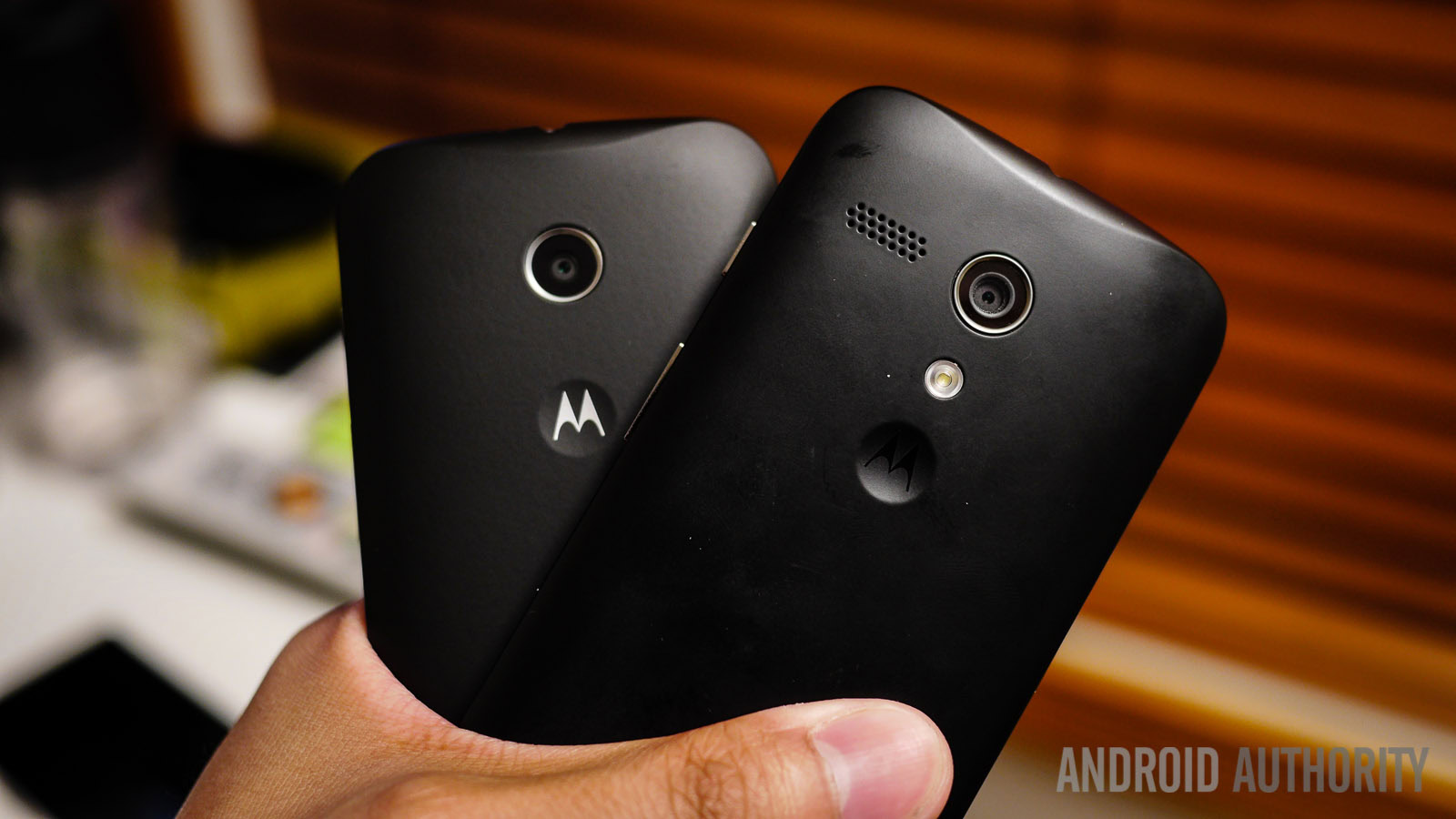
Motorola decided to take a different approach in the Android smartphone wars by shying away from the specs race, and instead, focusing on offering consumers premium feeling devices at an affordable price point. While the Moto X is the more high-end model, and performs as such, the cheaper Moto G really drove home the fact that affordable did not have to mean a huge compromise in quality and performance.
Motorola upped the ante even further with its latest release, the Moto E. An entry-level smartphone, priced at just $129, the Moto E is an option that is even more wallet-friendly than the Moto G. Granted, some compromises have been made along the way, but whether these make enough of a difference in picking one over the other is what we find out today’s battle of low-cost smartphones. Here’s a look at the Motorola Moto E vs Moto G!
You might also like: 10 popular cases to protect your Moto E

The design aesthetics of both smartphones are quite similar, with the only noticeable difference, at a first glance, being the lack of a rear flash on the Moto E. But spending some more hands-on time does bring out some subtle differences in quality. While the back of both devices feature a soft touch plastic, the back cover of the Moto E is a little more rigid. The volume rock and power button of the Moto E are also not as meaty, compared to the stiffer click with the buttons of the Moto G.
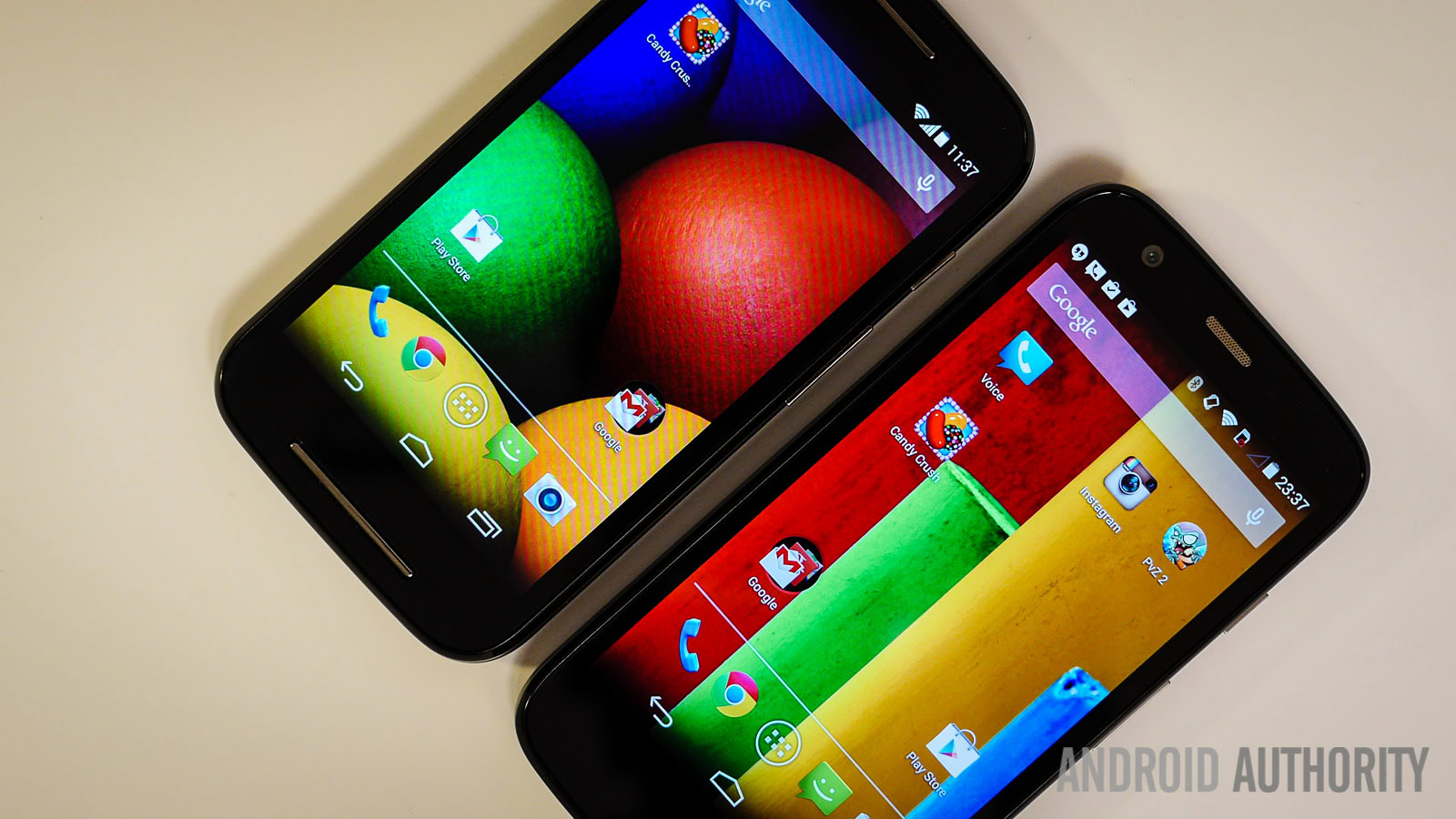
On the front, the Moto E features a smaller 4.3-inch display with slightly larger bezels, and missing is a front-facing camera. What is new on the smaller smartphone is the inclusion of a front-facing speaker, found under the silver bar just below the display. This is definitely a welcome addition, considering that the rear speaker of the Moto G was a point of contention for a lot of consumers.
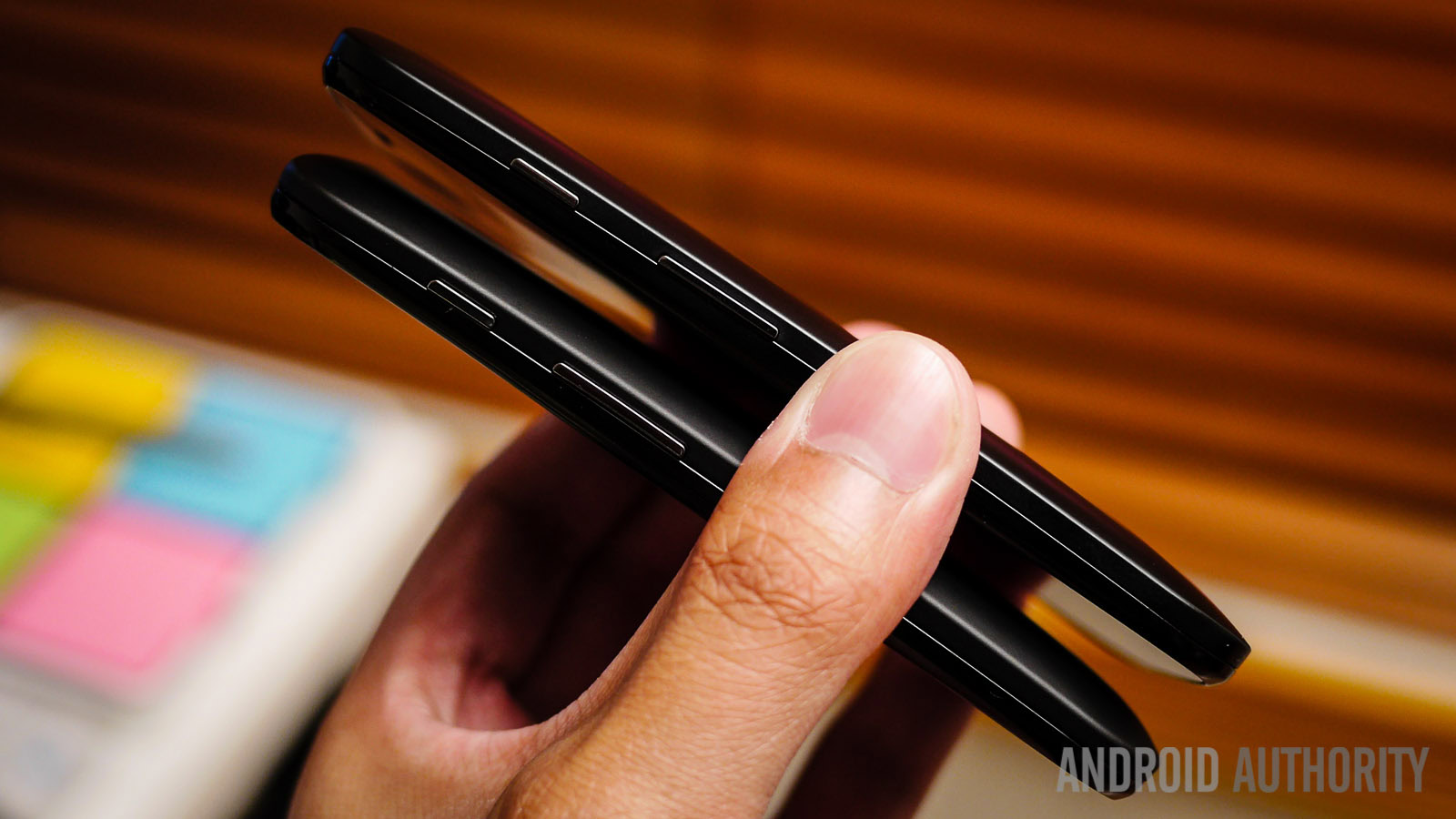
In terms of size, the Moto E is thicker than the Moto G, but weighs around the same as the Moto G, resulting in an overall handling experience that should be quite similar. Keeping with the motif of customization, the Moto E, like the Moto G, comes with a removable back cover, which can be replaced with Motorola Shells, which allow for numerous colour options.
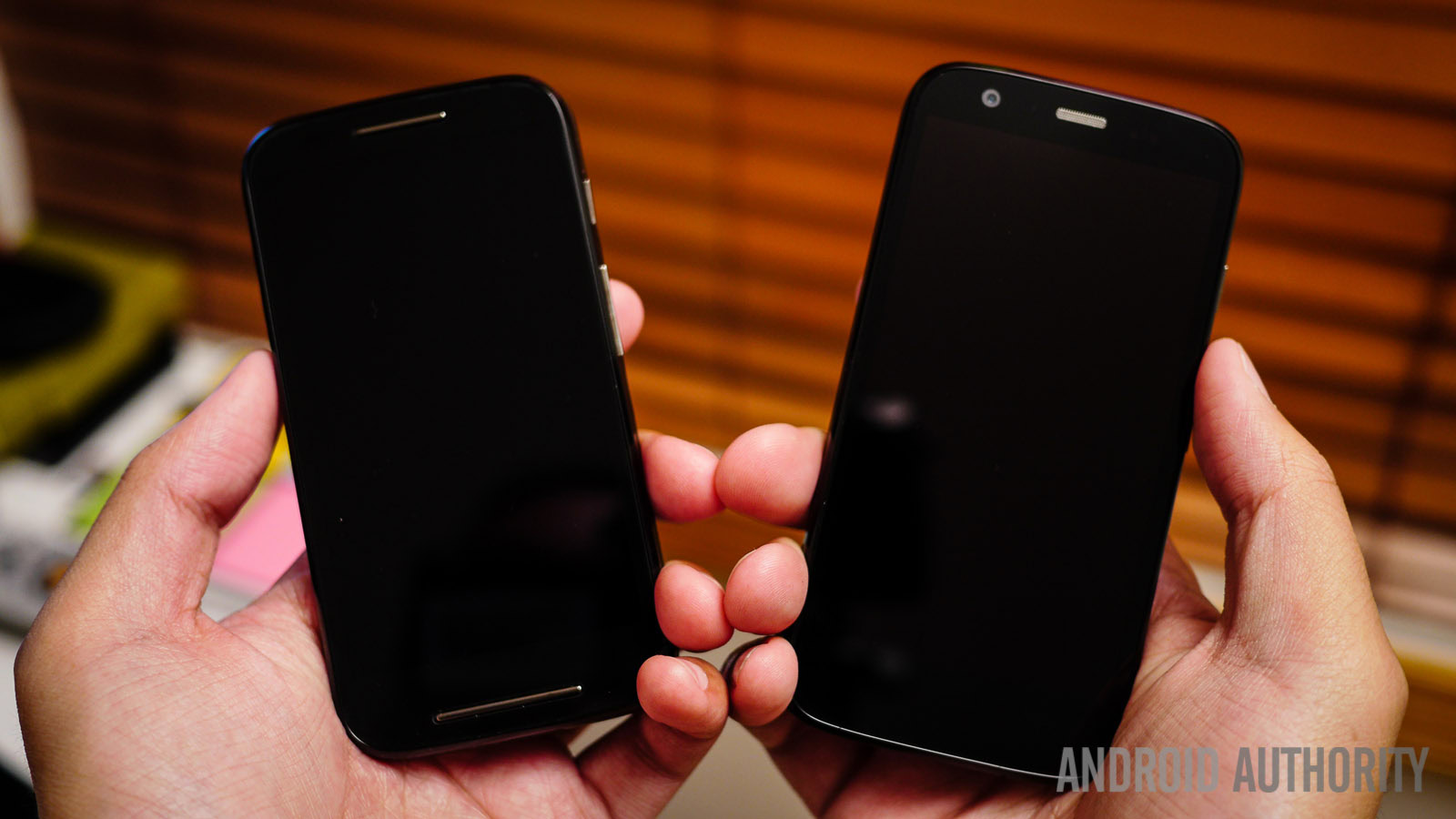
For such a low cost, the Moto G was actually very durable, and luckily, that continues with the Moto E. The Gorilla Glass 3 and anti-smudge coating will keep the 4.3-inch screen protected and looking great, while the P2i coating will keep the entire device protected against water splashes.
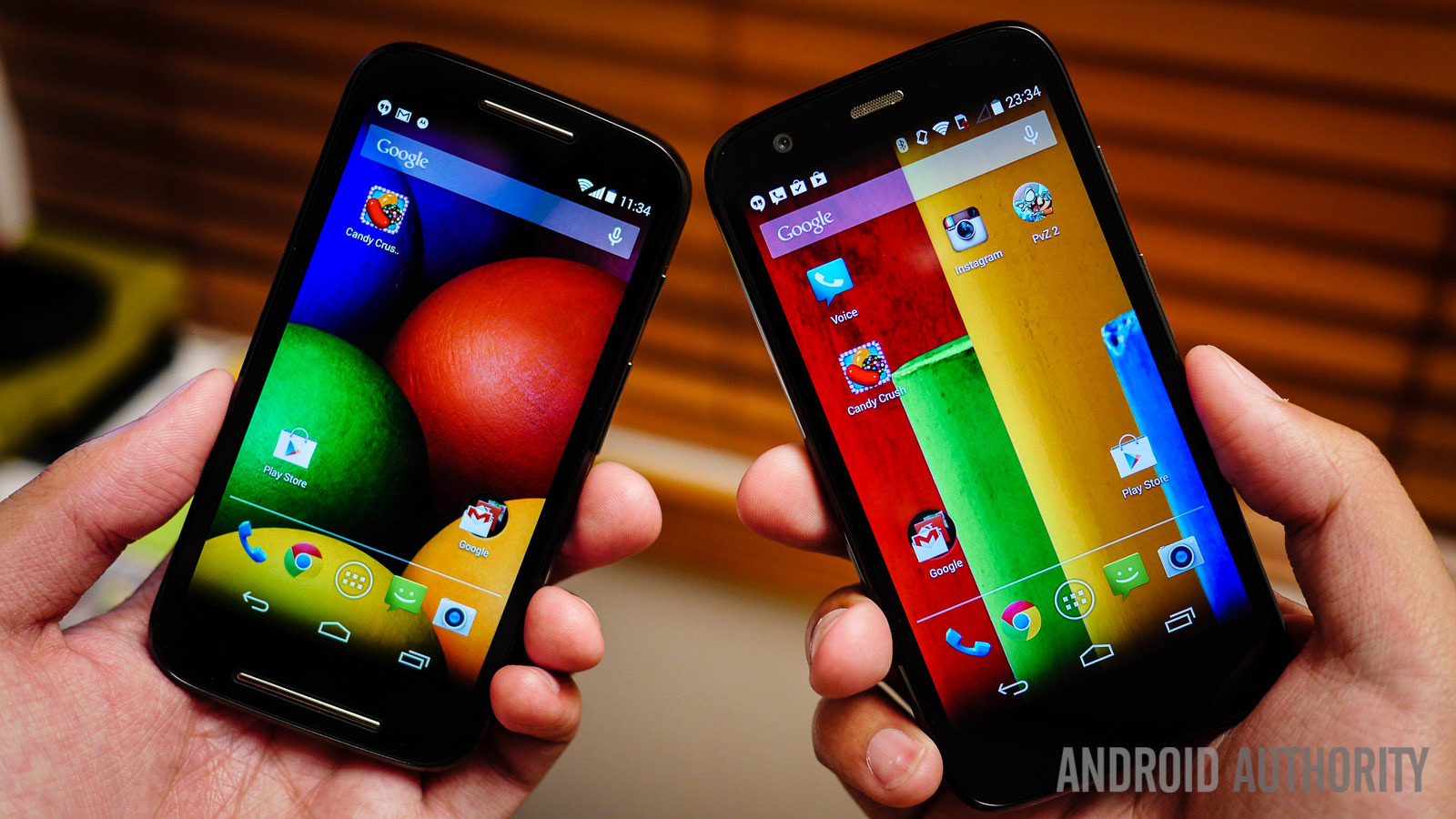
When it comes to the display, the Moto G features a 4.5-inch screen with a 720p resolution, resulting in a pixel density of 326 ppi. On the other hand, the 4.3-inch display of the Moto E comes with a qHD (960 x 540) resolution, with a pixel density of 256 ppi. Of course, the display of the Moto E isn’t nearly as good as the one found with its larger sibling, but it’s still one of the best available at its price point.
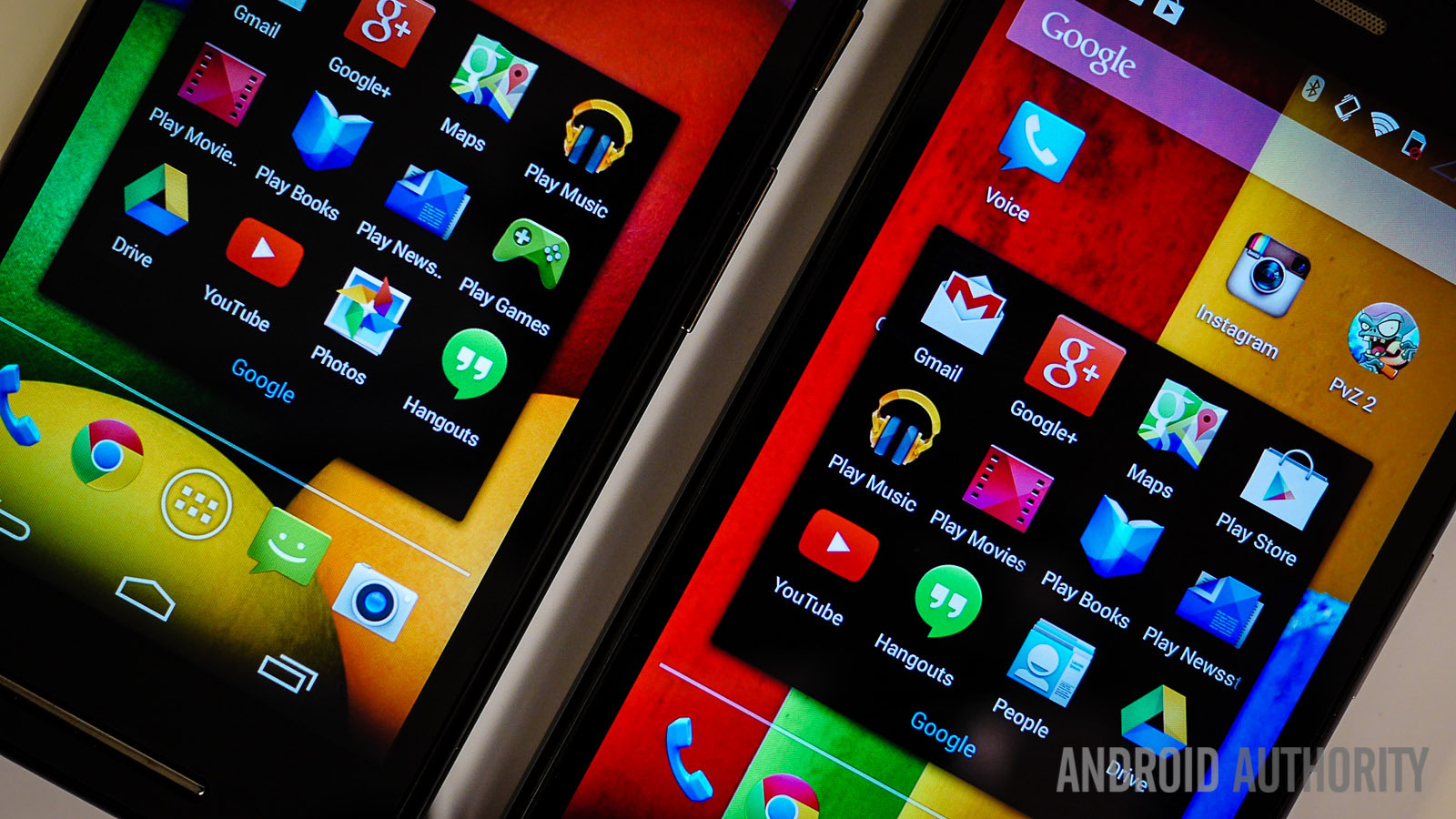
While the 720p display of the Moto G does very well in most media viewing situations, you’ll find that the smaller screen and lower resolution of the Moto E only just about gets the job done in the overall viewing experience. If you’re hoping to use your smartphone a lot as a media consumption device, you will get a far better experience with the Moto G.
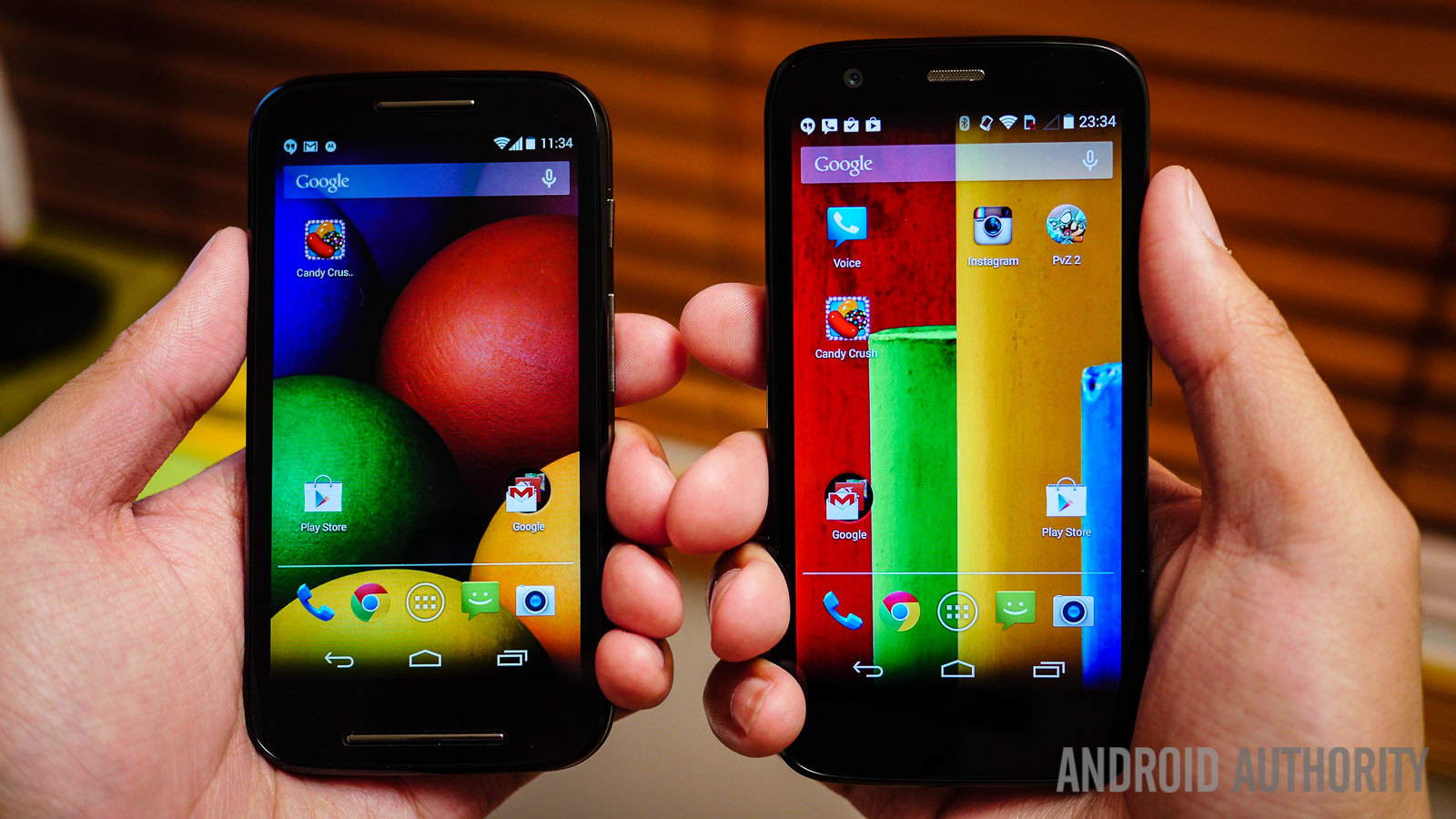
The Moto E features a dual-core Qualcomm Snapdragon 200 processor, clocked at 1.2 GHz, and is backed by the Adreno 302 GPU and 1 GB of RAM. In contrast, the Moto G offers more power with its quad-core Qualcomm Snapdragon 400 processor, also clocked at 1.2 GHz, which is backed with the Adreno 305 GPU, along with 1 GB RAM.
While the processing package of the Moto G is stronger, both devices offer a decent overall experience, which is above and beyond what you’d see with other smartphones in their respective pricing classes.
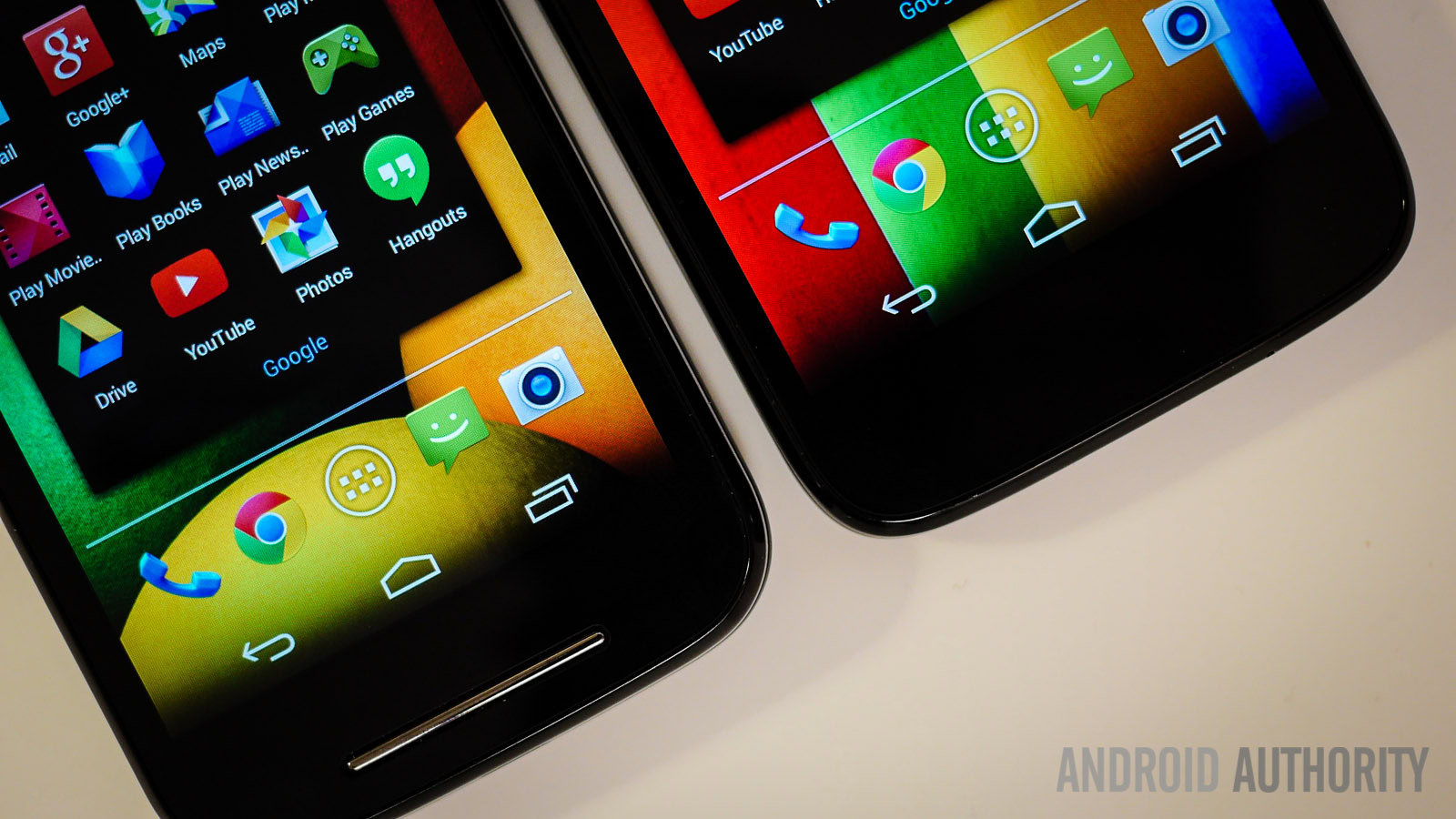
When it comes to basic use such as flipping through apps and loading webpages, the Moto E is actually not that much slower than the Moto G, but when it comes to more processor-intensive apps and multi-tasking, the Moto E understandably struggles a bit more.
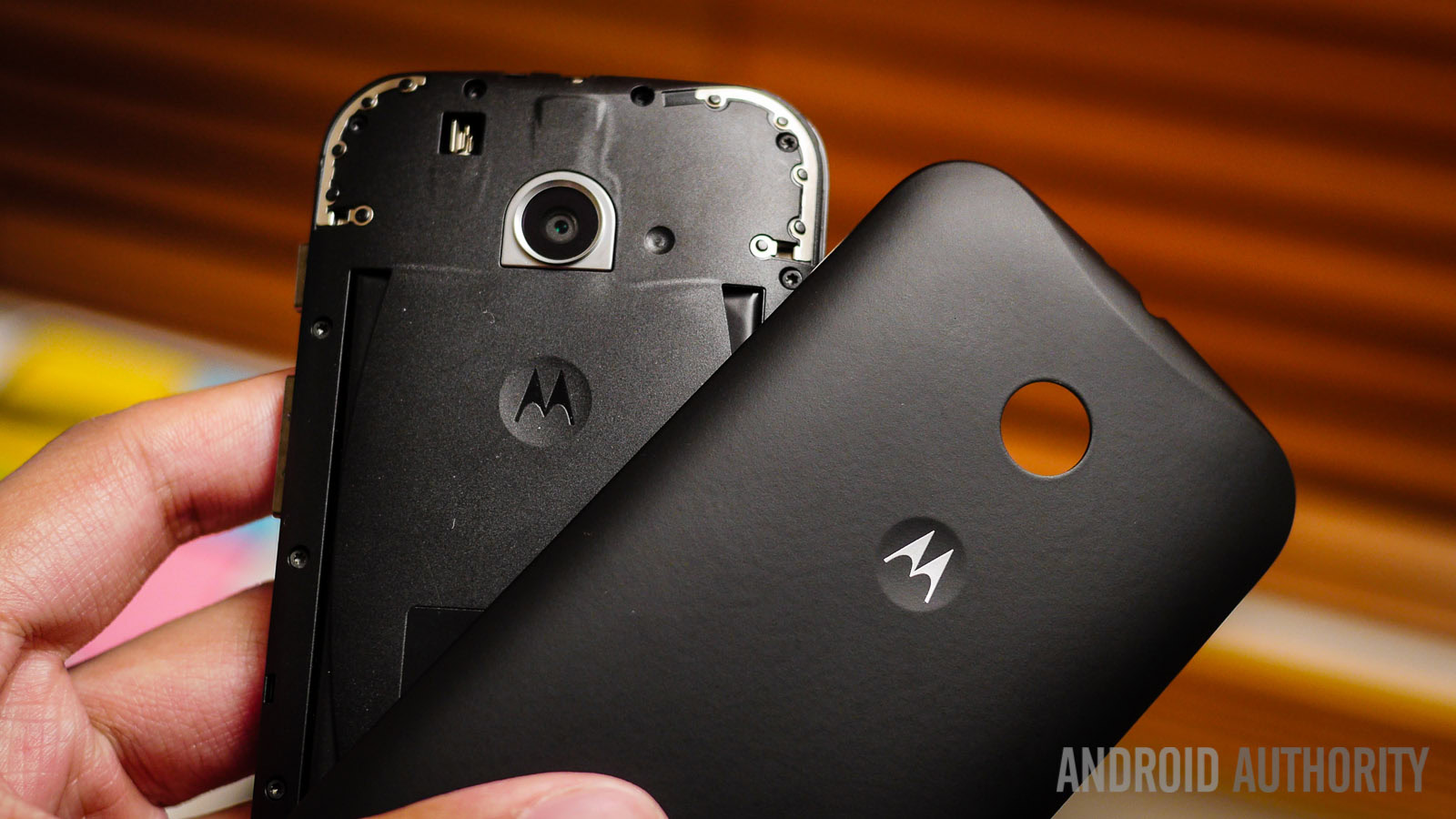
One of the reasons Motorola managed to price these smartphones so aggressively was their no frills approach with regards to hardware.
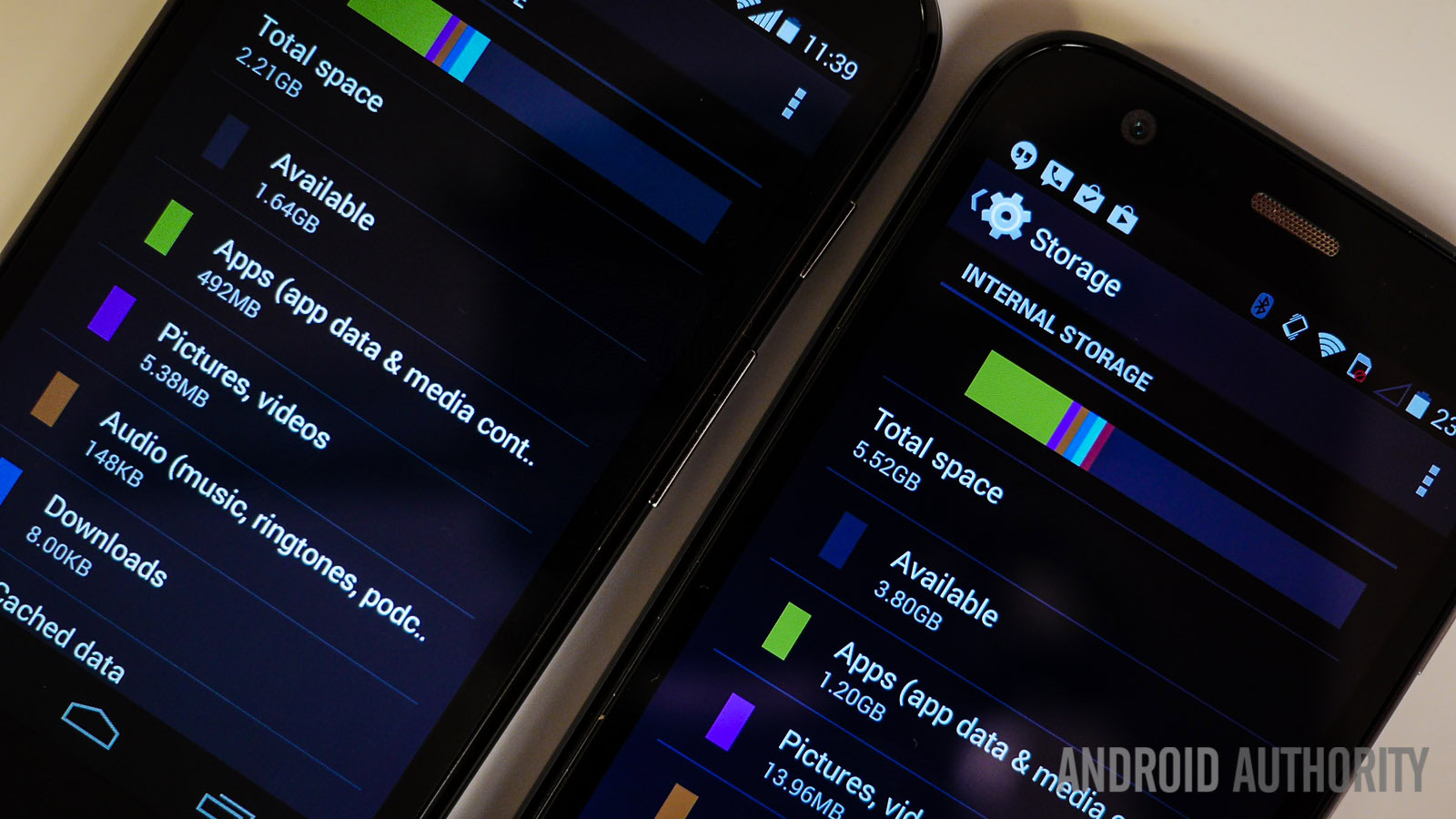
The Moto E offers just 4 GB of storage, compared to the 8GB or 16 GB available with the Moto G. But the Moto E does hold an advantage here, with the availability of microSD expansion.
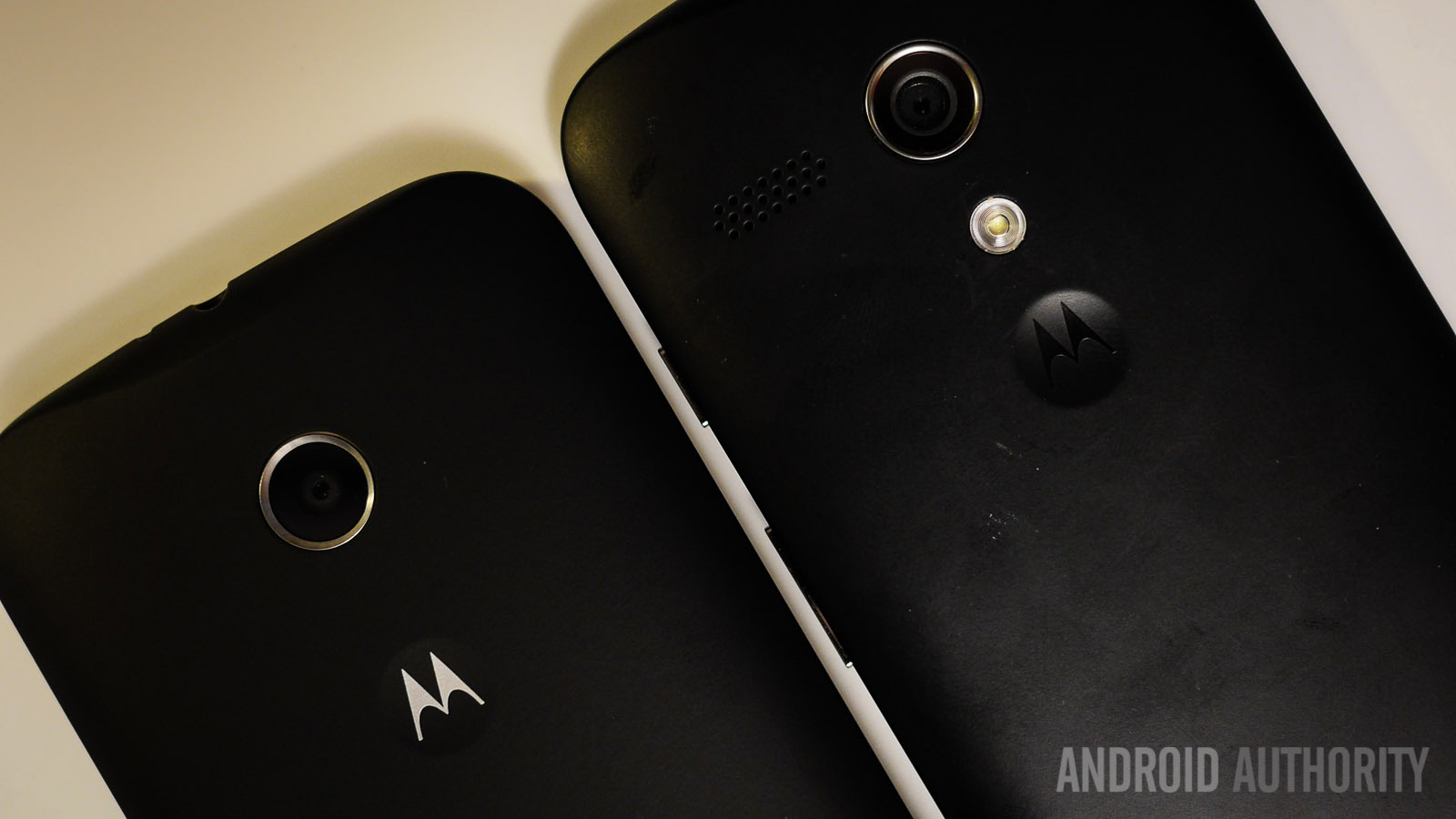
While non-removable, the 1980 mAh battery of the Moto E should keep the device alive throughout the day, helped along by its processor and the lower resolution of its smaller display. The battery life should be comparable, if not better, than what is available with the 2,070 mAh unit found in the Moto G.

When it comes to the sound experience, the Moto E takes a step in the right direction by featuring a front-facing speaker. On the other hand, the placement of the speaker at the back of the Moto G meant that the sound would be muffled when the phone was placed on a surface, and you’d also end up covering it while holding the phone. That being said, the speaker of the Moto E isn’t a spectacular performer, and essentially just gets the job done, but having the speaker up front is an enhancement, and is certainly a feather in the cap of the Moto E.
The versions of both smartphones used in this comparison offer only 3G connectivity, but there is a 4G LTE capable version of the Moto G that was launched alongside the Moto E.
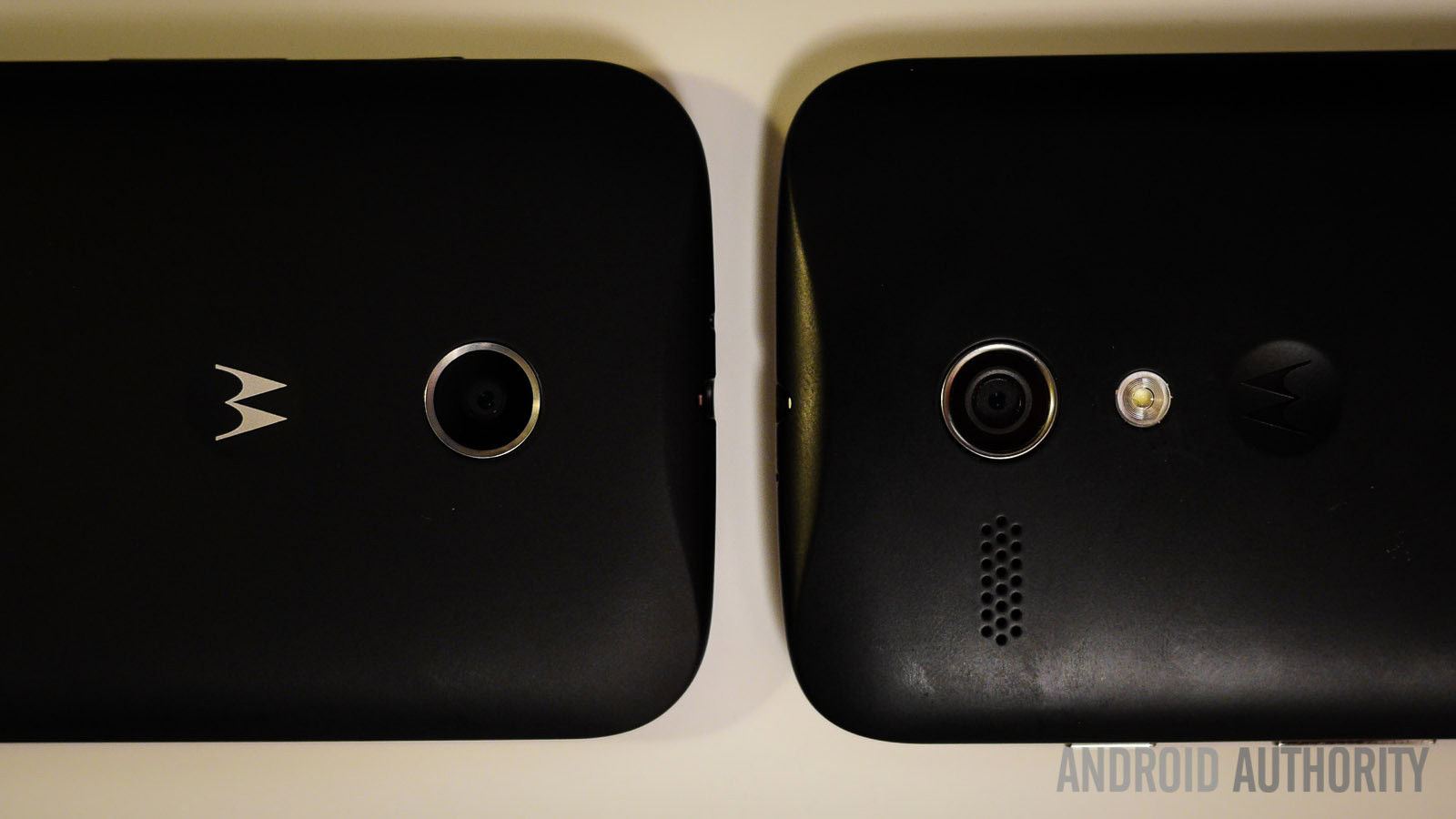
Both the Moto E and Moto G feature 5 MP rear shooters. The big difference is that the Moto E doesn’t come with an LED flash, in another compromise to keep the cost low. The Moto E also doesn’t have a front-facing camera, while the Moto G comes with a 1.3 MP camera up front.
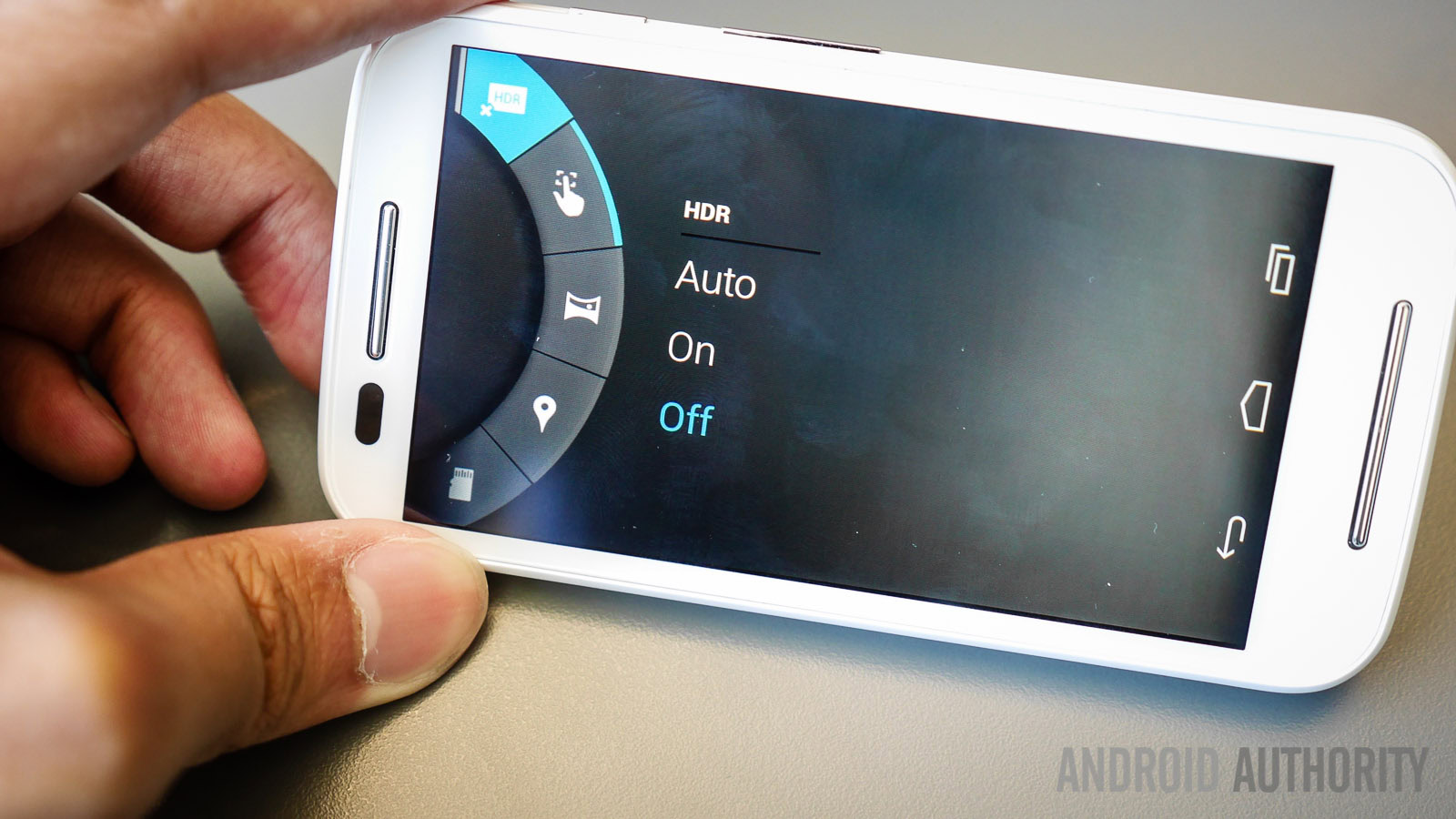
The camera application on both are the same, and include features like Auto HDR, Easy Focus, and some exposure controls. As expected, the image quality isn’t exceptional on either of these lower tier smartphones, but Motorola has mentioned that the camera optics of the Moto E has been optimized to provide a reliable experience, despite its place at the lower end of the price spectrum.
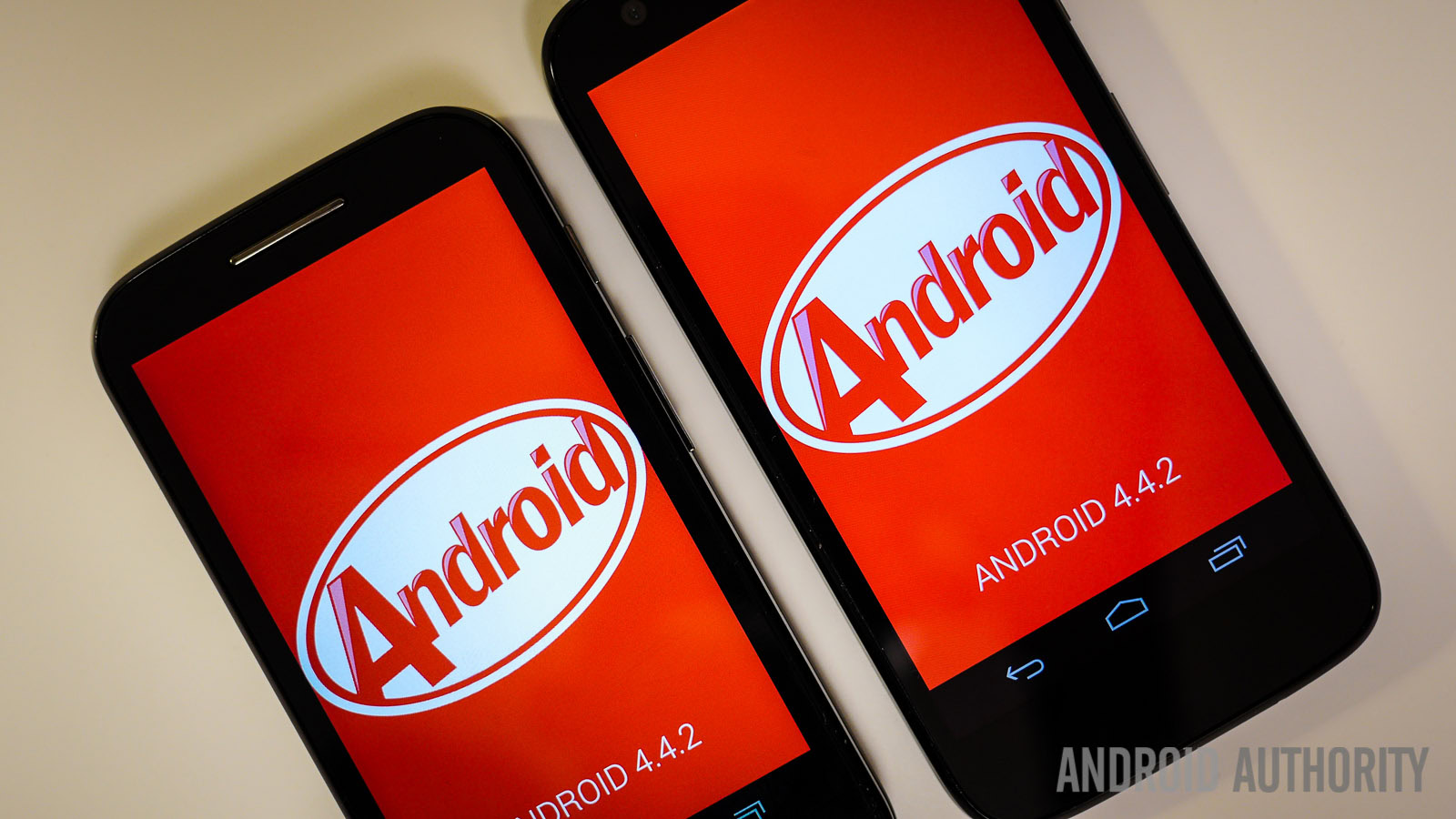
Like the Moto G and the Moto X before it, you get an experience on the Moto E that is very close to stock Android in many ways.
There are a handful of special Motorola apps available, such as Motorola Assist, for intelligent control options, and Motorola Migrate, that makes making the move from an older device much easier. The Moto E does come with one new feature that is currently available on the Moto G, called Motorola Alert, an app that is designed to make it easy for you to share your location with friends and family, or when leaving places.
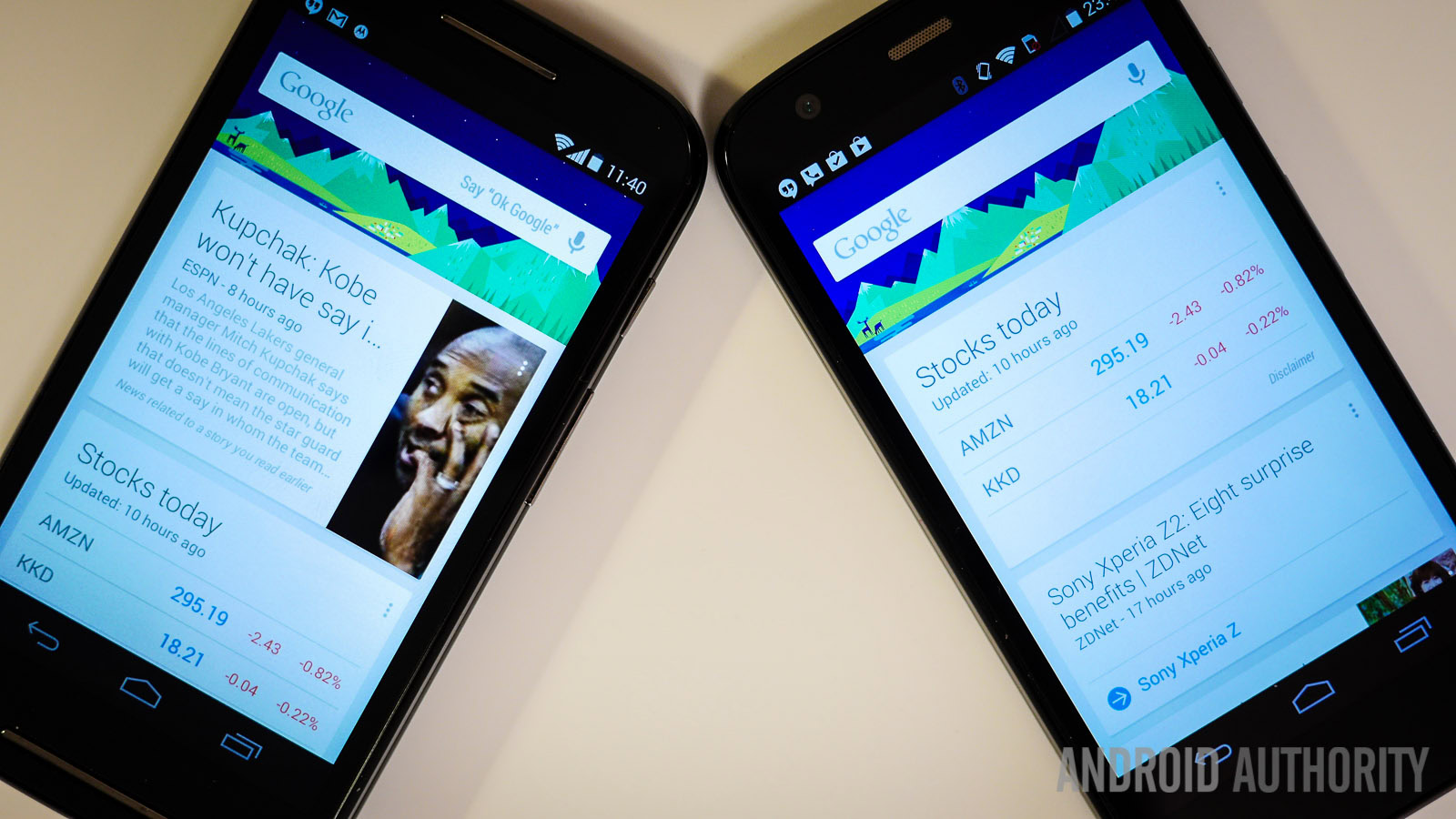
With an experience that is as close to stock Android as possible, with the exception of a Nexus device, and the promise of future updates to at least the next version of Android, both the Moto E and Moto G provide the best software experience at a budget price.
| Moto E | Moto G | |
|---|---|---|
Display | Moto E 4.3-inch LCD, qHD (540×960), 256 ppi, Gorilla Glass 3 | Moto G 4.5-inch LCD, HD (1280 x 720), 326ppi |
Processor | Moto E 1.2GHz dual-core Snapdragon 200 Adreno 302 | Moto G Qualcomm Snapdragon 400, quad-core @ 1.2GHz, Adreno 305 |
RAM | Moto E 1 GB | Moto G 1 GB |
Storage | Moto E 4 GB, microSD card slot, up to 32GB | Moto G 8/16 GB |
Camera | Moto E 5 MP rear | Moto G 5 MP rear, LED flash, 1.3 MP front-facing |
Battery | Moto E 1,980 mAh | Moto G 2,070 mAh |
Connectivity | Moto E GPS, microUSB 2.0, Wi-Fi a/b/g/n, Bluetooth 4.0 | Moto G GPS, microUSB 2.0, Wi-Fi a/b/g/n, Bluetooth 4.0 |
Software | Moto E Android 4.4 KitKat | Moto G Android 4.4 Kitkat |
Dimensions | Moto E 124.38 x 64.8 x 12.3 mm 142 grams | Moto G 129.9 x 65.9 x 11.6 mm 143 grams |
Colors | Moto E Black, Turquoise, Lime | Moto G Black, White |
So there you have it – the Moto E vs the Moto G! While the $129 price point of the unlocked version of the Moto E is its biggest selling point, the Moto G isn’t that much more expensive at $179, so making the choice between the two comes down to what you’re looking for from your smartphone.
Paying extra for the Moto G gets you a device with a higher resolution, slightly larger display, and a faster processing package. On the other hand, Motorola included a few useful enhancements with the Moto E, such as its front facing speaker, and the availability of microSD expansion.
In either case, both these smartphones are ideally suited for anyone looking to make the jump to the Android smartphone world, with two very accessible, and more importantly, affordable devices for anyone on a budget.
Thank you for being part of our community. Read our Comment Policy before posting.